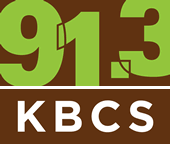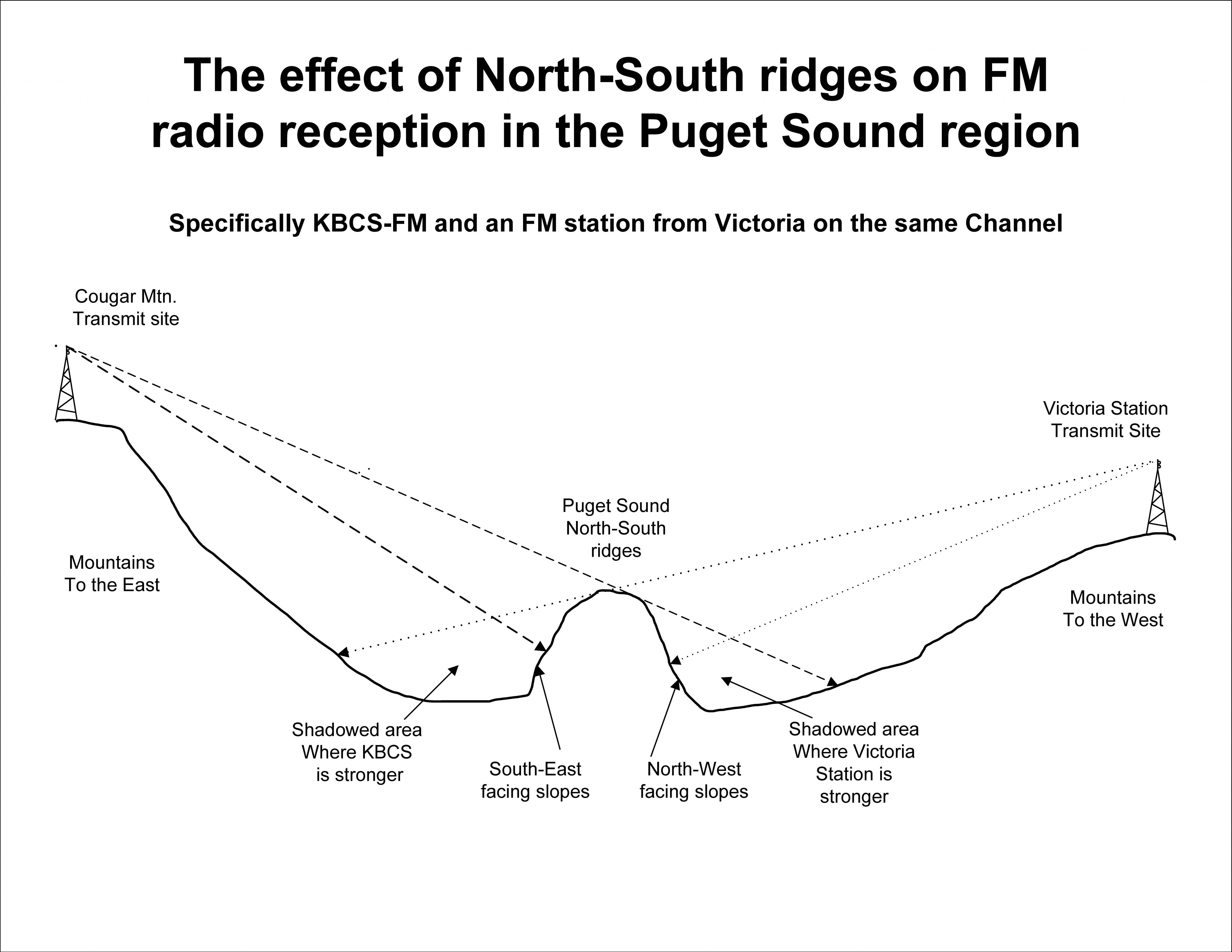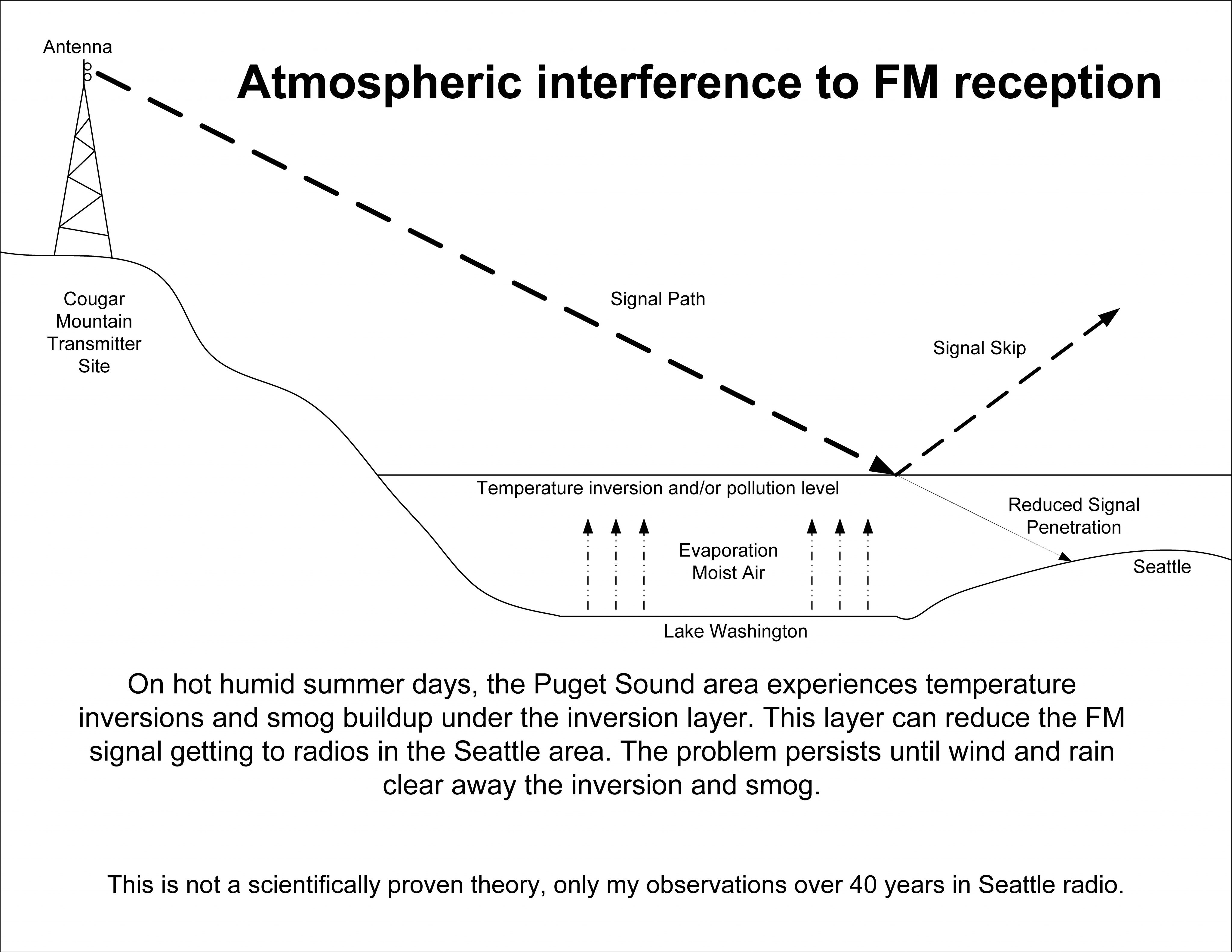FM Transmission for FM Radio receivers:
The KBCS transmitter antenna is located on Cougar Mountain (near Issaquah) at 1,400 feet above sea level. Our signal coverage area reaches more than 4 million listeners across the Puget Sound.
Here is a detailed map of our coverage area.
To receive and enjoy public radio to the fullest, you will need three items:
- Good Radio
- Suitable Location
- Proper antenna
FM radio waves travel more-or-less in straight lines. They are weakened by objects that get between the transmitter and receiver, such as buildings and mountains.
Radios
For good reception, a radio must have good selectivity (a radio’s ability to separate weak stations located nearby on the FM dial, from strong stations) and good sensitivity (the ability to receive weak, distant stations). You probably have a radio with these features, but no two radios operate the same way.
Car Radios
Car radios must be built to high standards to provide decent reception in a moving vehicle, in the presence of varying terrain, with a serious source of interference (your engine). You have probably noticed that FM radio reception is usually better in your car than in your house.
Home/Office radios
Most home radios have poor selectivity and sensitivity, with analog tuning (as opposed to digital tuning, where the radio station’s frequency is displayed in illuminated numbers). Most clock radios, under-cabinet radios, “boom boxes”, etc. do not work very well compared to a car radio. Fortunately, if your less-expensive radio has at least one important feature, you may be able to improve reception with an antenna.
Location & Antenna
These two items are MORE important than the kind of radio you are using. You can get similar reception quality in a bad location using a great antenna as you can in a good location using a bad antenna.
Location
- The closer your antenna is located to a radio transmitter tower the better chance you have of receiving a clear signal.
- The higher up your antenna is located, the better chance you have of receiving a clear signal.
- If your antenna is on a hill, you will get better reception than if it is in a valley or on a west facing slope.
- If there is a large object (like a mountain or building) between your antenna and the transmitter tower you will probably receive a poor signal.
- If your antenna is outside, it will perform better than if it is inside.
Antenna
- Built-in antenna: Even the lowliest radio has some sort of antenna, typically built-in. Many clock/table radios use the power cord as an antenna. Digital devices with an FM radio use the headphone cord as the antenna. Signals they receive are usually variable; for example, when you walk around the room, the signal strength will change.
- Wire “dipole”: This is a flexible wire antenna that comes packed with some radios. Using this antenna will improve reception somewhat. It is attached to the back of the radio, then strung up somewhere in the room as a “T,” with the two ends extended as far as possible from each other. The “T” should be moved around to see what location and orientation works the best to receive KBCS.
- Telescoping antenna (aka – rabbit ears): Some “boom boxes” and portable radios have one or two telescoping antenna rods. These perform somewhat better than the wire dipoles because you can move the one (or two) rods around.
- Tip: Circular, ashtray sized, and other types of indoor antenna are meant for UHF television and will not work very well with an FM radio.
- Tip: We do not recommend amplified indoor antenna. The size and location of your antenna – not the price or the beauty – are the biggest determinants of its performance.
- Outdoor Antenna: If you can somehow manage an outdoor antenna, this is the way to go. If you want to install a new outdoor FM antenna, there are two types to choose from, omni-directional and directional. An omni antenna, like the Winegard HD-6010, will receive FM signals from all directions. This is a decent choice if you like to station-hop. If you mostly listen to one station or most of the stations you listen to are in the same direction, you can use a directional antenna. Any simple VHF TV antenna, like the Winegard YA-7000 will work well. Outdoor antennas should be connected to the radio using Coaxial cable, and if necessary, the appropriate adaptors to convert the coax to screw terminals.
Interference
Earth’s atmosphere is full of radio frequency signals, some of which will conflict with each other. Here are few examples of interference that we have heard about.
- Interference from other stations: Typically, this can be cured with a radio that has better selectivity. In our northern broadcast area, there is a Canadian (Victoria) commercial radio station operating on 91.3 FM. Depending on your location North West facing slopes), this station can over-power the KBCS signal. If you hear another station while trying to listen to KBCS, try listening on a different radio. Another option is to use a directional antenna.
- Multi-path interference: Sometimes the same FM signal can be received by your radio’s antenna from two different directions, at slightly different times. For example, if there is a nearby reflective surface, like a skyscraper or cliff face, signal might arrive at your antenna directly from the KBCS transmitter, and again a fraction of a second later after bouncing off that large object. To cure this, try moving the radio/antenna around to see if there is a place where the interference goes away; sometimes a move of just a few feet will make a big difference. You can also use a directional antenna or try to re-orient your existing antenna.
- Other sources of interference: There are plenty of other sources of interference, such as: amateur radio operators, computers, TV’s, fluorescent lights, electric fences or anything electric. Try to determine which of these sources is causing the problem and isolate it.
- Atmospheric interference: On rare occasions, the FM signals (coming from mountain top transmit towers) can be affected by atmospheric anomalies. This is most noticeable on hot muggy summer days and will disappear when the rain or wind clears pollution out the Puget Sound air.
FM Reception Effects of North to South Ridges
Atmospheric Interference to FM Reception



